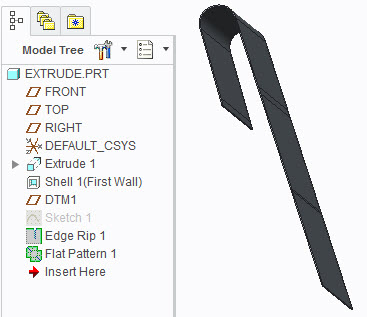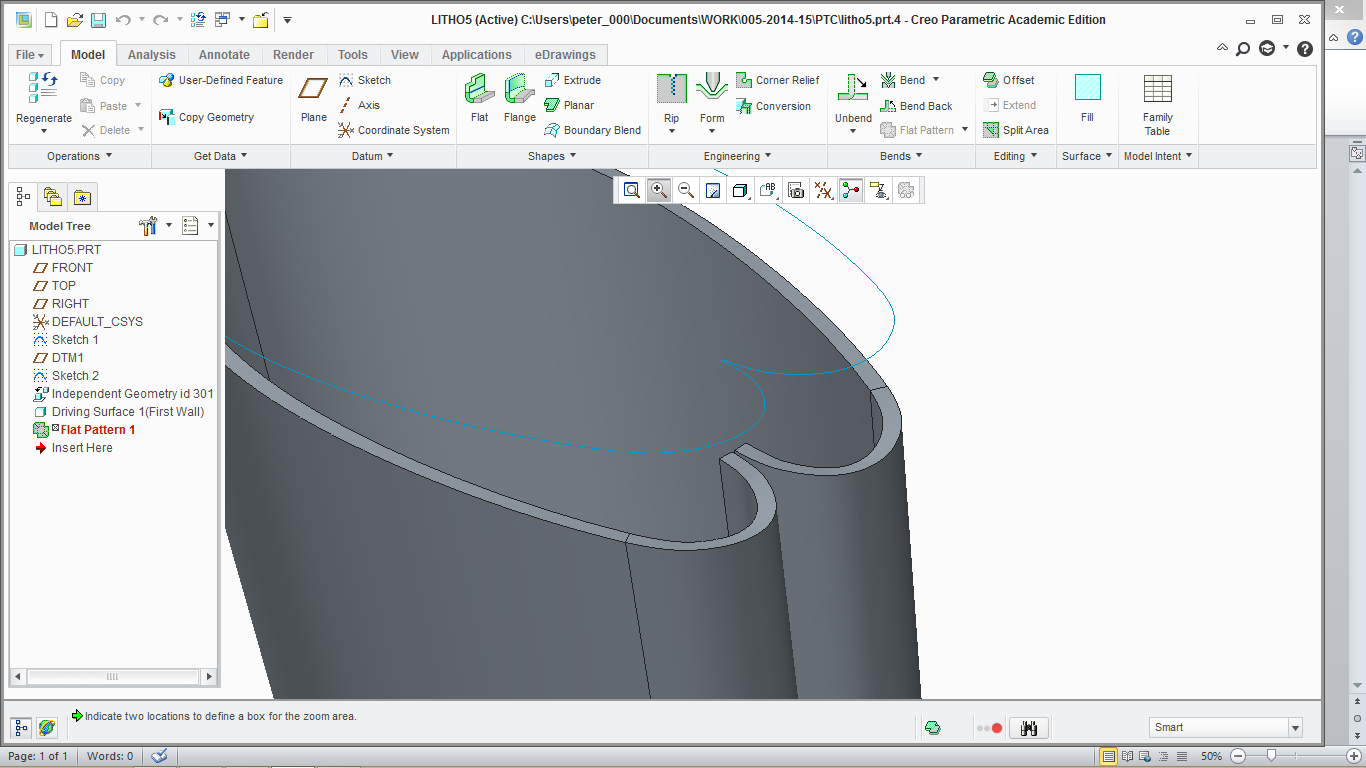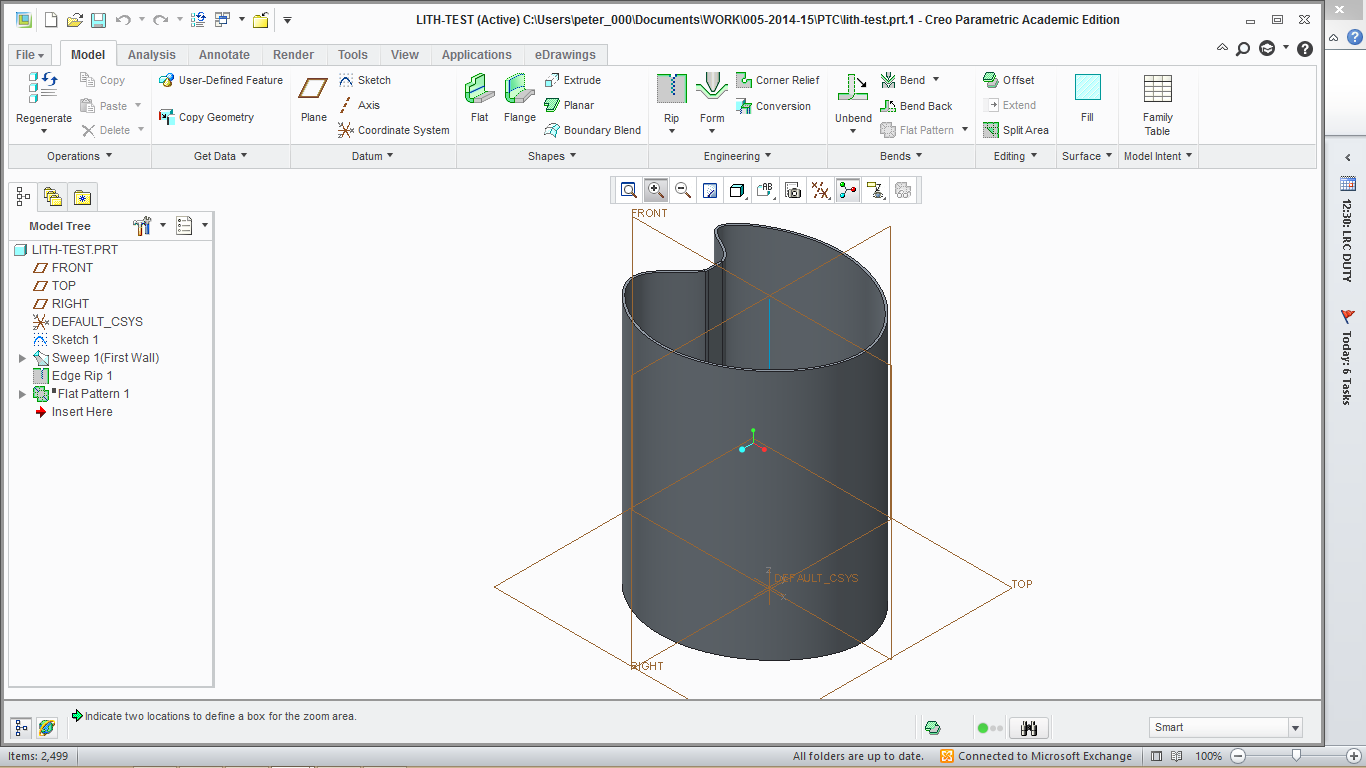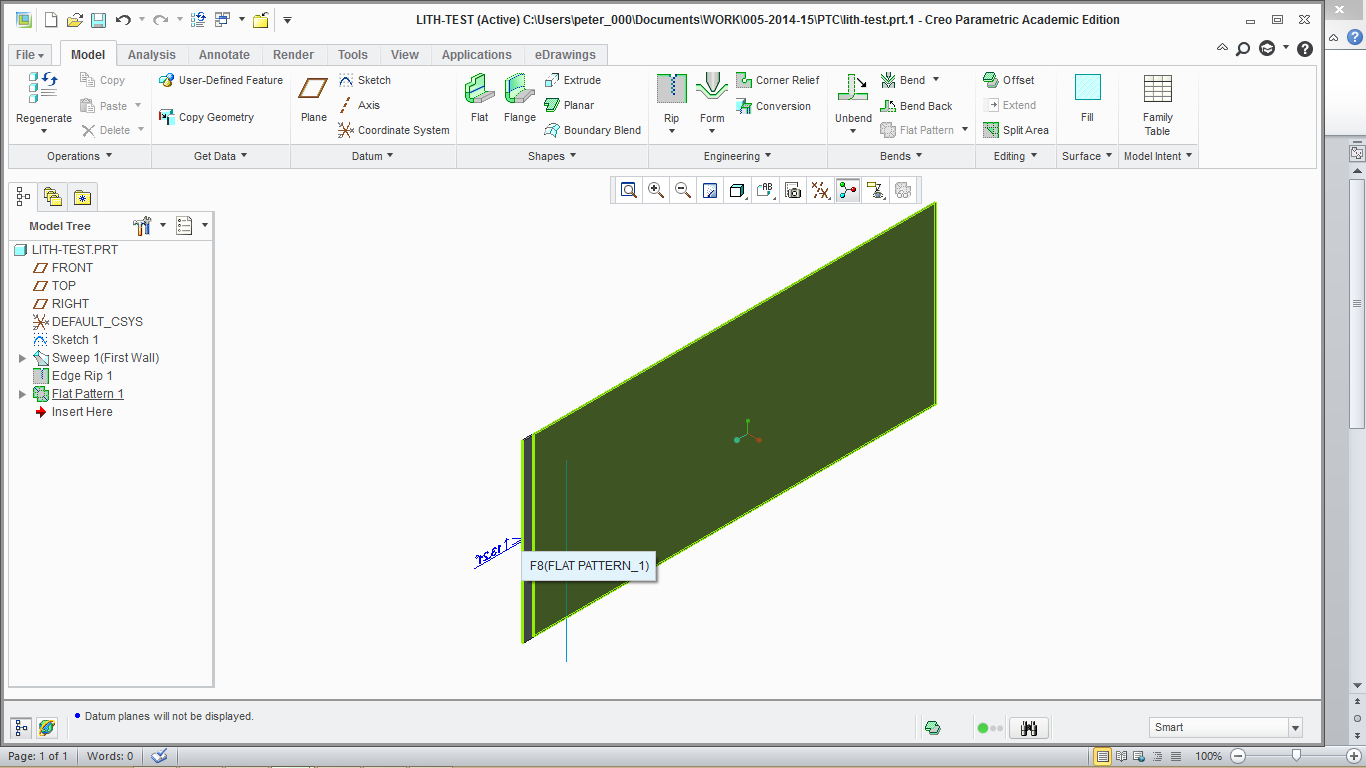Community Tip - Learn all about the Community Ranking System, a fun gamification element of the PTC Community. X
- Community
- PTC Education
- PTC Education Forum
- Re: Flat Pattern of a rounded part
- Subscribe to RSS Feed
- Mark Topic as New
- Mark Topic as Read
- Float this Topic for Current User
- Bookmark
- Subscribe
- Mute
- Printer Friendly Page
Flat Pattern of a rounded part
- Mark as New
- Bookmark
- Subscribe
- Mute
- Subscribe to RSS Feed
- Permalink
- Notify Moderator
Flat Pattern of a rounded part
Hi, we have drawn a design for a stool, it starts as a truncated cone Upside down, we cannot seem to turn the 3D part into a sheet material version to create a flat pattern. Needed so we can construct it from Bendy Ply. Does anyone know of any tutorials of demos around similar work?
- Tags:
- sheetmetal;
- Mark as New
- Bookmark
- Subscribe
- Mute
- Subscribe to RSS Feed
- Permalink
- Notify Moderator
Hi- Try this link
www.youtube.com/watch?v=6uyym5S2Gmc
Let me know how you get on!
- Mark as New
- Bookmark
- Subscribe
- Mute
- Subscribe to RSS Feed
- Permalink
- Notify Moderator
Hi Peter,
The video you linked works although it leaves a gap in the conical surface.
The sketch rip I described is the elegant solution.
A little while ago I helped an A level student who wanted aboriginal art on the outer surface of cylinder for wind chimes.It was tricky. We ended up with a tube in a tube. The outer tube was ripped in the method outlined. The flattened metal tube had the pattern applied then bent back. The inner tube was to se the depth of cut. The two assembled tubes were set up on a rotary axis on the mill for machining.
Cheers
Tim
- Mark as New
- Bookmark
- Subscribe
- Mute
- Subscribe to RSS Feed
- Permalink
- Notify Moderator
The trick is using a sketch line to rip the surface to allow it to flatten. I created a model which is attached.
- I revolved the shape then shelled, removing top and bottom.
- On the outer surface I created a tangential datum plane then sketch a line down the outside of the shape.
- The shape was converted to sheet metal model.
- A sketched rip selected the line which cut the cone.
- The flat pattern was applied resulting in a net for cutting.

- Mark as New
- Bookmark
- Subscribe
- Mute
- Subscribe to RSS Feed
- Permalink
- Notify Moderator
Thanks Peter and Tim, I wish it was so simple, part attached...
I will try your methods tomorrow, however. We tried sketch rip, but as you will see there is no flat surface in my clients model (yes Tim, its Ruth)
Thanks for the support.
- Mark as New
- Bookmark
- Subscribe
- Mute
- Subscribe to RSS Feed
- Permalink
- Notify Moderator
Ooooh! This is tricky...trying all sorts and nothing has worked so far...
- Mark as New
- Bookmark
- Subscribe
- Mute
- Subscribe to RSS Feed
- Permalink
- Notify Moderator
So far tried lots of combinations of extrude with taper, sweep, swept blend (loft) and different geometries and either get non constant thickness error or the Flat Pattern stage fails. I'm pretty sure it's the variable radius that's causing the problem because a parallel extrude partially flattens like this:


- Mark as New
- Bookmark
- Subscribe
- Mute
- Subscribe to RSS Feed
- Permalink
- Notify Moderator
I tried modifying the profile to give a flat surface for a surface rip.

Which worked quite well and would look "right" but got similar fail msgs to Tim

Nice 4axis mill by the waay!
- Mark as New
- Bookmark
- Subscribe
- Mute
- Subscribe to RSS Feed
- Permalink
- Notify Moderator
Thanks gents, nice to see your problem solving processes are identical to what we tried... and had the same errors, eg varying thickness, all seems to work but flat pattern does not show. I also surface modelled and thickened to get the shape.
It is now an intellectual exercise. Ruth found the old Technical drawing equipment and did the triangulation to draw a full size half pattern. We will post a photo of the fungi stool when finished. Thanks for your time, support and collegiality.
- Mark as New
- Bookmark
- Subscribe
- Mute
- Subscribe to RSS Feed
- Permalink
- Notify Moderator
Always happy to help, it keeps my brain active in advancing years. ![]()
Looking forward to seeing the finished stool.
- Mark as New
- Bookmark
- Subscribe
- Mute
- Subscribe to RSS Feed
- Permalink
- Notify Moderator
I got a parallel sided cardioid tube to open out but haven't had time to try to a truncated cone!
Always enjoy a challenge!
- Mark as New
- Bookmark
- Subscribe
- Mute
- Subscribe to RSS Feed
- Permalink
- Notify Moderator


- Mark as New
- Bookmark
- Subscribe
- Mute
- Subscribe to RSS Feed
- Permalink
- Notify Moderator
Lunchtime- made as a sheet metal part.
Swept blend and used the thickness setting rather than offset in sketch.
Can rip on a corner. Now just need to sus flattening!
Peter
- Mark as New
- Bookmark
- Subscribe
- Mute
- Subscribe to RSS Feed
- Permalink
- Notify Moderator
Peter using a round got me thinking and I managed to get a parallel sided shape to flatten in sheet metal but as soon as I added a draft it caused the flatten to create a weird partially curved shape. ![]()
- Mark as New
- Bookmark
- Subscribe
- Mute
- Subscribe to RSS Feed
- Permalink
- Notify Moderator
Have you tried the draft before the thicken?
- Mark as New
- Bookmark
- Subscribe
- Mute
- Subscribe to RSS Feed
- Permalink
- Notify Moderator
OK, to get a complex part ripped and developed to a pattern, I did surface rips and removed difficult sections, flat pattt\erned it, saved as.
Then opened original and removed other sections, repeated. It took 3 goes but could then assemble the various flat patterns to get what we needed. The MAKER had already used some old technical drawing gear to do the task while I fiddled, but we know we can do it next time. I will post a photo of the Mushroom(actually a CACTUS called Lithop) stool. Thank you all for the effort and your time.
PeterT
- Mark as New
- Bookmark
- Subscribe
- Mute
- Subscribe to RSS Feed
- Permalink
- Notify Moderator
Will look out for that
- Mark as New
- Bookmark
- Subscribe
- Mute
- Subscribe to RSS Feed
- Permalink
- Notify Moderator
Well done! Top marks for persistence. ![]()

